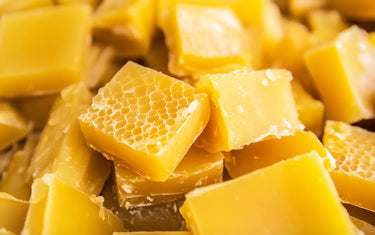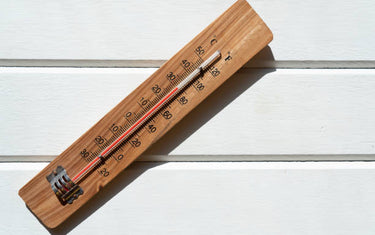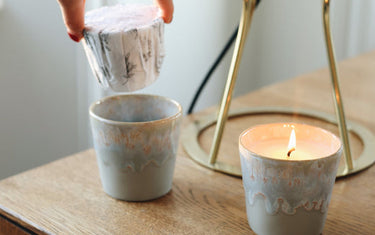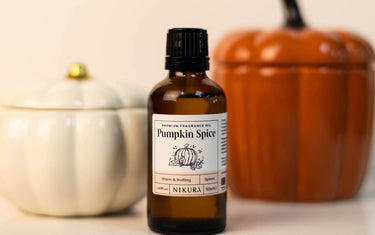5 min read / 17 August 2025 / yasmin sharp
Crafting for Different Cultural Celebrations
Discover how to create authentic handmade candles, lamps, and scents that celebrate the beauty and traditions of global festivals.
Share this post
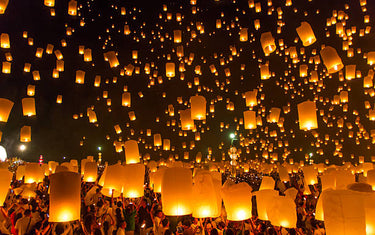
The world is filled with a wonderful array of diverse cultures, many of which are centred on spiritual and religious festivals that are celebrated throughout the year.
Diwali, Ramadan and the Chinese New Year are some of the most notable that incorporate the use of candles, lanterns and light, whilst there are many others that also do the same.
These festivals bring with them the opportunity to sharpen your craft skills, especially if you love making your own DIY candles or blending oils.

Diwali-inspired warming spice blends
Diwali marks the start of the Hindu new year, and it usually falls somewhere between October and November, depending on the position of the moon. It’s also known as the ‘Festival of Lights’, with millions of people lighting Diwali lamps and candles inside and outside of their homes to represent the triumph of light over darkness.
Salt dough diya lamps are a common feature for Diwali and are easy to make. You can add your own colourful decorations and use them to adorn your home throughout the festival.
To get started, you’ll need the following:
- ½ cup table salt
- ½ cup water
- 1 cup plain flour (not self-raising flour)
- Baking tray
- Measuring cup
- Medium mixing bowl
- Whisk or spoon
- Parchment paper or silicone baking mat
Decorations
- Water
- Bowl or cup for water
- Paintbrushes
- Acrylic or nontoxic paint
- Plate or palette
- Cloth rag or paper towels
- Tea light or flameless candle
Instructions
- Mix the flour and salt together in a bowl.
- Slowly add water and gradually stir until the flour and salt is combined.
- Take out the mixture and knead it for 5 minutes before leaving it to rest for 15 minutes.
- If the dough is too sticky, add a little more flour. If it is too dry, add a few drops of water to moisten the mixture.
- Split the dough into 3-4 sections and pre-heat the oven at 200 degrees Fahrenheit.
- Shape the dough into the shape of your diya lamp, ensuring you have space for the candle later.
- Place the dough onto a parchment paper on a baking sheet.
- Bake until the dough is dry and hard (which should take around two hours). Alternatively, you can leave them to dry naturally for a few days.
- Remove from the oven and allow the lamps to cool.
- Paint and decorate your Diwali lamp and leave them to dry again.
- Place a candle inside the clay lamp and place it around your home to bring light into your home.

Chinese New Year prosperity scents
The Chinese New Year falls between 21st January and 20th February, depending on when the new moon first appears. 2026 will be the Year of the Horse and people born under this sign are thought to be energetic, active and high-spirited.
Prosperity is a central theme of Chinese New Year, celebrating hope and spiritual success in abundance. So, with that in mind, here’s a simple but effective prosperity scent that is full of positive energy and life and is perfect for use in an oil lamp.
- 3 drops of Frankincense oil
- 2 drops of Sweet Orange oil
- 2 drops of Ylang Ylang essential oil
- 1 drop of Patchouli oil
Instructions
- Pour all the oils in a dark glass bottle and shake to combine.
- Diffuse the scent in your chosen space and let it reinvigorate and uplift your energy levels.
- This also works well as an aromatherapy bath oil, or you can alternatively use it in an aromatherapy diffuser necklace to carry around with you.

Ramadan calming evening fragrances
Ramadan is expected to start around mid-February 2026, upon the first sighting of the new crescent moon. It lasts for either 29 or 30 days, depending on the lunar cycle, marking the start of a month of prayer, fasting and community.
If you are thinking of participating in Ramadan or simply want to create a peaceful, harmonious environment that encourages reflection, crafting your own Ramadan candles is an excellent place to start.
Ingredients
- Shelled Walnuts
- Beeswax
- Double boiler
- Candle wicks
- Wick stickers
Instructions
- Use a knife to gently crack upon the walnut shell, so you can carefully remove the walnut inside. Dust them out to remove any leftover particles and remember to eat the walnuts as they are perfectly good to eat!
- Cut your wicks down to about an inch.
- Place the wick stickers inside the shells.
- Using a double boiler, melt down the wax, stirring slowly as you go.
- Once fully melted, remove from the heat and carefully pour the wax into the shells.
- Leave your shell candles to cool and set and they should be ready within 24 hours.

Seasonal festivals across different markets
Some other notable festivals that incorporate light and candles include:
- Kwanzaa: Celebrated by approximately 500,000 to 2 million Black people in America, Kwanzaa is held between December 26th and January 1st each year and is based on African harvest festival traditions. A seven-branched candleholder called the kinara takes centre stage during festivities, representing the Seven Principles (Nguzo Saba) of Kwanzaa.
- Hanukkah: Whilst a smaller celebration compared to other Jewish holidays like Yom Kippur and Rosh Hashanah, Hanukkah is still widely commemorated. Known as the Festival of Lights, it lasts for eight nights from December 14th to the 22nd. Candles are lit to remember the ‘Miracle of the Oil’ in 2nd century BCE, when a small amount of oil was used to light the menorah in the Second Temple of Jerusalem, which unexpectedly lasted for eight days.
- Japanese Winter Illuminations: Winter light displays usually take place during November and December in Japan, although some do run through to February or even the start of spring. They vary between traditional lantern festivals and modern light displays, illuminating cities, towns and country areas, creating a magical spectacle for everyone to enjoy.

Final thoughts
Whether you want to celebrate a specific festival or broaden your crafting skills, there’s something for everyone to enjoy.
Diwali, Ramadan and the Chinese New Year all incorporate candles and light into their festivities, with oil lamps, clay lamps and DIY candles all featuring prominently.
Kwanzaa and Hanukkah also offer the opportunity to get creative, giving you every chance to find new sources of inspiration throughout the year.


